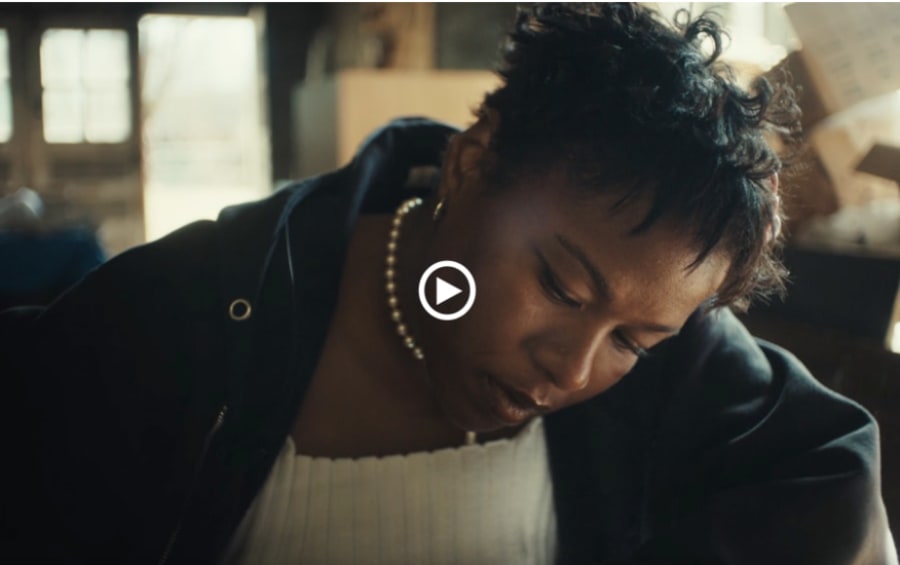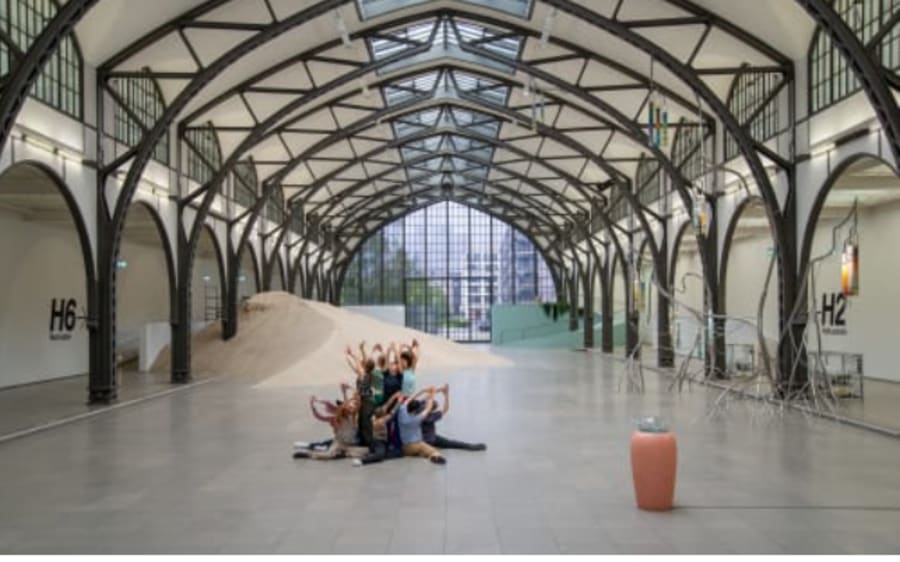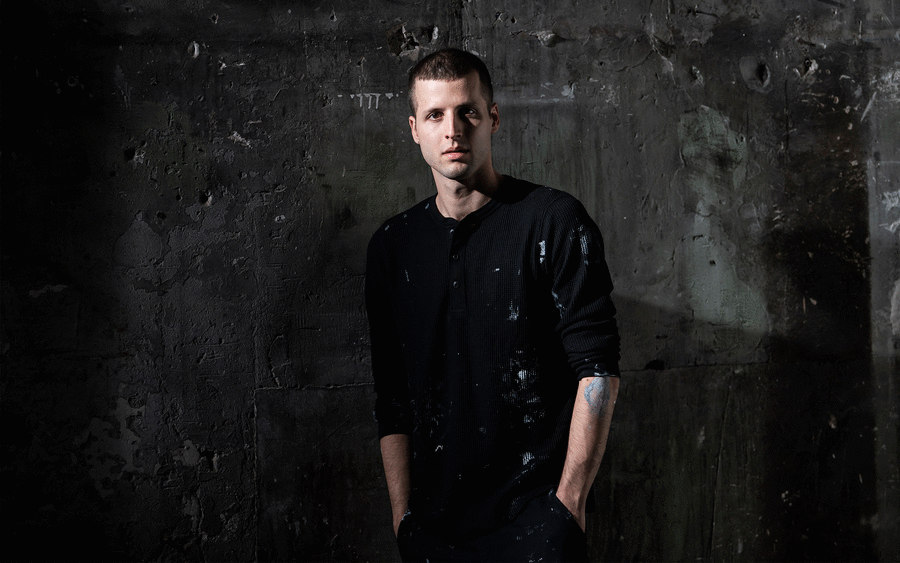
How Parley for the Oceans is fighting to save our seas
Collaborating with world-famous artists, the organization spotlights the urgent need to make peace with our planet’s most vital resource

How Parley for the Oceans is fighting to save our seas
Collaborating with world-famous artists, the organization spotlights the urgent need to make peace with our planet’s most vital resource

How Parley for the Oceans is fighting to save our seas
Collaborating with world-famous artists, the organization spotlights the urgent need to make peace with our planet’s most vital resource

How Parley for the Oceans is fighting to save our seas
Collaborating with world-famous artists, the organization spotlights the urgent need to make peace with our planet’s most vital resource

How Parley for the Oceans is fighting to save our seas
Collaborating with world-famous artists, the organization spotlights the urgent need to make peace with our planet’s most vital resource
‘How inappropriate to call this planet Earth,’ observed Arthur C. Clarke, ‘when it is clearly Ocean.’ The legendary science fiction author had a point. Oceans cover more than 70% of the world’s surface and play a fundamental role in sustaining life both in the seas and on land, regulating the climate, the weather, and the water cycle. Half the oxygen available to us is produced by marine microorganisms known as phytoplankton, meaning that the oceans generate every second breath that fills our lungs. Simply put, without them, we would not exist.
And yet, humanity is waging what Cyrill Gutsch, founder and CEO of the environmental organization Parley for the Oceans, describes over a Zoom call as a ‘war’ against these vital bodies of water, devastating marine ecosystems through pollution, global heating, and overfishing. As Gutsch explains, his organization’s mission is captured in its name: ‘A Parley is a peace conference, a negotiation held to reach the terms of a truce […] We are at the point where we have to understand that if we “win” this war, if we don’t make peace with nature, then it’s over – we’re going to lose everything. Calling ourselves Parley was an invitation for the forces in society that have the ideas, the knowledge, the influence, and the power to come together and drive change.’ Since its beginnings in 2012, Parley has developed a global network encompassing creative communities, brands, governments, and NGOs, advocating for the protection of the planet’s all-connecting oceans, and taking direct action to that end.
Contemporary art has long been at the core of Parley’s identity. The painter Julian Schnabel was a key early supporter, designing the organization’s logo and hosting the first Parley Talk at his Manhattan home, Palazzo Chupi. Today, Parley’s Art for the Oceans initiative (of which Art Basel is a partner) sees it team up with some of the world’s leading artists to create new works that highlight the fragility of marine ecosystems and raise funds to ensure their continued survival. For Gutsch, the importance of these collaborations lies not only in art’s ability to engender ‘empathy and an openness to the new,’ but also in the fact that at a time of what can feel like an overwhelming ecological crisis, ‘creativity is an antidote to despair. Every problem we face on this planet is the result of a human invention, so why on earth shouldn’t we invent our way out of this mess?’
Gutsch likes to ‘work with the best,’ and accordingly, one of Parley’s first artist collaborations was with the West Coast legend Ed Ruscha, who produced a limited-edition customized surfboard to aid the organization’s cause. Fabricated from sustainable wood and bio-resins, and printed with a hazy, pink-tinged skyscape, over which float the words ‘SO IT IS THE AMAZING EARTH’, it’s a work that speaks in almost Zen koan-like tones of the everyday miracle of existence on our blue home planet – of all we have, and all that we might lose. A surfboard is an object that enables us to experience the sheer briny, physical might of the oceans with a rare immediacy, while its flat surface also provides the perfect support for an image. It’s no wonder, then, that since working with Ruscha, Parley has collaborated with artists including Katharina Grosse, Jenny Holzer, Kenny Scharf, Keiichi Tanaami, and Rosemarie Trockel on boards of their own.
Trockel’s contribution to the surfboard series is emblazoned with the name of the French poet Charles Baudelaire, rendered in a deep blue serif font against a chilly, arctic white ground. The work was inspired by his verse The Albatross (1859), which describes the titular sea bird as a ‘prince of cloud and sky’ who ‘frequents the tempest,’ and who might be compared to an artist soaring on the thermals of their imagination, or indeed to a surfer riding the ocean’s swell. For Trockel, collaborating with Parley was a matter of urgency. As she says, it’s ‘Time to wake up and learn not only from marine life itself, but also from those cultures which have held marine and all life to be treasured and protected.’ Displayed in a collector’s home, a Parley artist’s surfboard is a daily call to take action against a global emergency, but we might wonder if anybody has ever used one of these works to actually catch a wave. I put this question to Gutsch, who tells me with a laugh that when Parley sent Ruscha a proof of his finished board, ‘the first thing that came back was a photo of him surfing on it.’
Artists have also supported Parley’s mission by creating limited edition prints, such as Tatiana Trouvé’s August (2019) based on her original drawing – an image of a smoke-choked forest that references both European landscape painting of the Romantic era, and the fires that raged through the Amazon in the summer of 2019. Faced with such destruction, she says, ‘for me, the question is […] how and what to build on that which is collapsing?’ Following in the footsteps of Vik Muniz, Julio Le Parc, and Nigel Cooke, the latest artist to collaborate with Parley is Andi Fischer, a passionate surfer whose suite of four drawings are, he tells me, ‘intended to illustrate the imbalance in our waters […] Beaches that were clean and inviting just 15 years ago are now heavily polluted and almost unrecognizable […] I want future generations to experience the beauty of the oceans, just as I was able to as a child.’
Immersion in our planet’s magical blue depths is at the heart of Parley’s most ambitious project with a contemporary artist to date: Doug Aitken’s Underwater Pavilions, three polyhedral sculptural forms that were first installed beneath the ocean off the coast of Catalina Island, California, in 2016. Through a play of rock-like and mirrored surfaces, and positive and negative space, these works provide divers with a trio of kaleidoscopic portals through which they might glimpse anew the subaqueous world and its teeming inhabitants. Gutsch describes the experience of swimming among the Pavilions as ‘mind blowing,’ comparing it to visiting ‘outer space,’ and plans are currently afoot to install Aitken’s sculptures off the French coast during the 2025 United Nations Ocean Conference in Nice. What impact might these sculptures have on the delegates? For Gutsch, ‘the fear of the deep is a roadblock we have to remove,’ and the Pavilions are ‘an invitation to replace it with excitement and curiosity.’
At this time of environmental emergency, such a shift in consciousness is vital. Gutsch tells me that collaborating with artists is ‘Parley’s superpower,’ and contemplating Aitken’s sculptures – which float beneath the waves like thoughts we’ve too long suppressed – it’s hard to disagree. To engage with them requires bravery, humility, and perhaps above all a capacity for wonder. These, of course, are all qualities we’ll need if we are to preserve the oceans that girdle our imperiled world, and give each one of us life.
Parley for the Oceans is a new form of environmental organization that brings together creators, thinkers, and leaders across brands, governments, creative communities, and environmental groups to raise awareness for the beauty and fragility of the oceans and collaborate on projects that can end their destruction. What started as a collaboration space has fast become an award-winning global movement and network with its multidisciplinary approach and Parley AIR Strategy (Avoid, Intercept, Redesign). Parley works to accelerate solutions to marine plastic pollution, climate change, and overfishing with operations that have spanned 34 countries and counting. You can support Parley for the Oceans here.
Tom Morton is a writer and curator based in Rochester, UK. He is a regular contributor to frieze and ArtReview, and in 2022 curated the group exhibition ‘The Kingfisher’s Wing’ at GRIMM, New York.
Caption for top-image: Cleanup organized by Parley for the Oceans in Chile. Courtesy of Parley for the Oceans.
Published on June 8, 2024.



